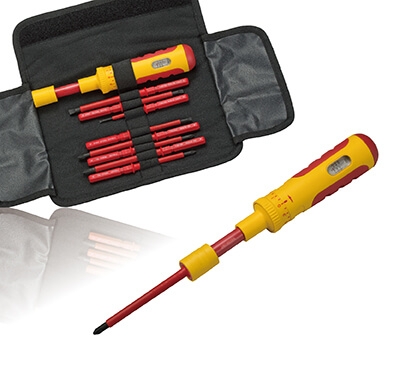How to Use a Torque Wrench?
_.png)
Mastering Torque Wrenches: Best Practices for Precision and Longevity in Industrial Assembly
This is one of the most common questions among engineers, technicians, and procurement professionals working with critical bolted assemblies. In precision fastening, the correct handling of a tool is just as important as its specifications. This article provides a complete guide to selecting, operating, and maintaining manual torque wrenches, helping professionals ensure both fastening accuracy and tool longevity.
We’ll also look at recent industry trends, such as connected torque tools, digital traceability, and calibration standards, all part of the Industry 4.0 evolution.
Understanding the Role of a Torque Wrench in Industrial Assembly
In every industrial assembly, maintaining the right preload on fasteners is crucial for safety and performance. Manual torque wrenches, whether click-type or preset, remain the most common solution due to their simplicity, reliability, and independence from power sources.
However, even the most precise tool must be used correctly to perform within its rated tolerance. With automation and digital manufacturing on the rise, torque tools are now being integrated into connected systems and data-tracking workflows. Studies have shown that combining torque wrenches with augmented reality (AR) guidance can significantly reduce human error and automatically generate tightening reports (arxiv.org).
According to recent market research, the global high-torque tool market is projected to grow at a CAGR of 7.6% from 2024 to 2034, reaching approximately USD 5.8 billion by 2034 (market.us).
The main drivers include higher precision demands, equipment upgrades, and the adoption of smart torque solutions across automotive, aerospace, and heavy industries (marketresearchintellect.com).
Step-by-Step Guide to Proper Use of a Manual Torque Wrench
- Match the Right Torque Wrench
- Select a wrench with the proper torque range for your application (e.g., 80–120 Nm for automotive wheel nuts).
- Choose the correct drive size (¼", ⅜", ½", ¾", or 1") for the fastener.
- Verify the accuracy grade — standard models are ±4%, precision models can reach ±2–3%.
- Ensure the wrench comes with a traceable calibration certificate.
- Set the Torque Value
- Adjust the torque according to engineering specifications (e.g., 100 Nm).
- For adjustable types, use the micrometer or dial scale; for preset types, confirm factory settings.
- Use Proper Sockets and Adapters
- Always use the correct socket size to avoid play or slippage.
- Consider the leverage effect when using extensions or crowfoot adapters — they may alter torque output.
- Apply Torque Smoothly
- Keep the wrench perpendicular (90°) to the bolt axis.
- Apply force smoothly and steadily until the click or impulse is felt — then stop immediately.
- Avoid jerking or pulling past the click point.
- Reset and Store Properly
- After use, reset the torque to the lowest setting to relieve spring tension.
- Store the wrench in a dry, shock-proof case away from moisture and dust.
Safety & Accuracy Considerations
Common Misuses to Avoid
Importance of Regular Calibration
According to ISO 6789:2017, a torque wrench should be recalibrated every 5,000 cycles or every 12 months, whichever comes first (torqlite.com).
In high-risk industries like aerospace or automotive manufacturing, more frequent calibration is recommended.
If the wrench has been dropped or exposed to extreme temperatures, it must be recalibrated before reuse.
Accredited calibration labs trace measurements back to ISO/IEC 17025 standards (norbar.com).
Factors Affecting Torque Accuracy
- Lubrication condition of threads (lubricated bolts reduce friction and increase preload).
- Temperature and material expansion during tightening.
- Use of extensions or offset adapters that change leverage.
- Operator technique, including pull speed and visual misalignment (tekton.com).
Quick Reference Table — Recommended Practices
|
Category |
Best Practice |
Notes |
|
Calibration Frequency |
Every 5,000 uses or annually |
More frequent for safety-critical industries |
|
Torque Setting |
Apply incrementally |
Gradual tightening improves consistency |
|
Lubrication Effect |
Adjust torque value |
Lubricated threads increase preload |
|
Operator Technique |
Smooth, vertical pull |
Avoid twisting or jerking motions |
|
Storage |
Reset to minimum, dry case |
Prevents spring fatigue and rust |
Frequently Asked Questions (FAQ)
Q1: Why should the torque setting be reset after use?
Because the internal spring remains under tension. Keeping it loaded for long periods leads to spring fatigue and accuracy drift.
Q2: Can I calibrate the wrench myself?
You may perform a preliminary comparison test if you have a reference torque tester, but final calibration should be done by an ISO-certified laboratory.
Q3: What if the wrench was dropped?
Any mechanical shock can affect internal mechanisms. Recalibration is mandatory before using it again.
Q4: How does lubrication affect torque readings?
Lubrication reduces thread friction, which increases actual clamping force, potentially leading to over-tightening if torque values aren’t adjusted accordingly.
Conclusion and Next Steps
Proper torque control ensures joint integrity, product reliability, and workplace safety. By following best practices from selection to calibration, companies can prevent costly assembly errors and extend tool life.
At Torque-Tech Precision Co., Ltd., we design and manufacture high-accuracy manual torque wrenches, torque multipliers, and testing equipment to support industrial and automotive applications worldwide, contact our team for calibration support and OEM/ODM services.
Explore our full Manual Torque Wrench products




.png)





